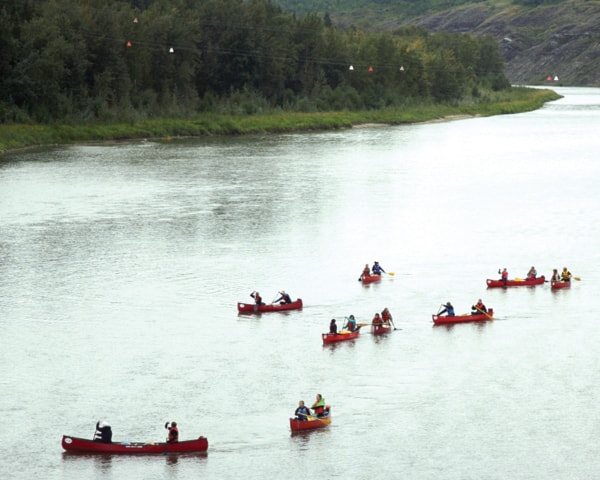Fisheries, wildlife and people will all suffer harm as a result of a provincial water policy that favours economics over the environment, says an Edmonton-based advocacy group.
Public Interest Alberta released documents concerning the province’s water management plan, including details of the government’s position on access to water from the South Saskatchewan River Basin, which includes the Red Deer River.
The documents were made public as a result of a legal dispute, now resolved, between the Tsuu T’ina Nation, located southwest of Calgary and the Province of Alberta, said Bill Moore-Kilgannon, executive director of Public Interest Alberta.
Documents gleaned from the court case reveal a management plan that has potential to cause serious damage to fisheries and wildlife habitat, largely because it is based on an assumption that the Red Deer, Old Man and Bow Rivers will keep flowing at the same rate as they are now, with no regard for the possibility that supplies will diminish in the future, Moore-Kilgannon said on Wednesday.
The plan allows people who hold senior licences for access to river water to sell the unneeded portion of their allocation to other users, such as the deal struck to provide water for the Cross Iron Mills project at Balzac, he said.
Those types of transfers must be approved by Alberta Environment, which can retain 10 per cent of the transfer amount for the environment, said Moore-Kilgannon.
However, at times of low flows, all of the water available for allocation goes to the senior licence holders, leaving nothing for junior licence holders, which includes the environment itself, he said.
The bottom line for the Red Deer River is that water markets being developed under the province’s water management plan do not take into account the impact of reduced flows in the Red Deer river, said Red Deer-based Tony Blake, a member of the Red Deer River Naturalists.
Scientific evidence already exists to show that Alberta has been through an unusually wet period and that, regardless of climate change, water supplies including glacial melt will drop off in the future, said Blake, a board member with Nature Alberta, former president of the Red Deer River Naturalists and a former chairman of the Alberta chapter of Trout Unlimited.
The concerns relate to a point of view, said Blake.
“It’s what we think our landscape is good for. If you want this gold rush mentality, OK, you’re going to turn this landscape into cash as quickly as possible, and that seems to be where our provincial government’s been for, at least since the (Don) Getty administration, and it seems to be where the federal government has gone, too,” said Blake.
“It’s foolhardy to think that the water’s going to keep coming and to allocate water that way,” he said.
Cal Dallas, MLA for Red Deer South, said Alberta’s water management plan has continued to evolve since 2006. Further changes are being developed to reflect the needs of a growing population, including a public consultation to be announced after the ruling Progressive Conservative Party chooses a new leader to replace Premier Ed Stelmach.
The provincial government recognizes that some changes must be made to ensure that Alberta’s aquatic resources remain sustainable and viable, while recognizing the history behind which water licences have been allocated, said Dallas.
Among the key issues, every licence transfer requires a detailed review, including public input. If the transfer is not in the best interest of the public or if it can be shown that it is potentially detrimental to the environment, then it will not be approved, he said.
Dallas became involved in water management policy during his term as president of the Red Deer Chamber of Commerce in 2001/02. The Red Deer policy recommendations helped guide the Alberta Chamber of Commerce’s position on Alberta’s Water For Life Strategy.
Water For Life has come to be regarding as a leading strategy for water policy across Canada and across North America, said Dallas.
bkossowan@www.reddeeradvocate.com
